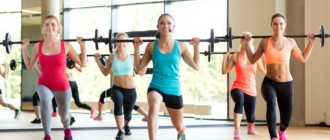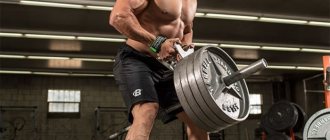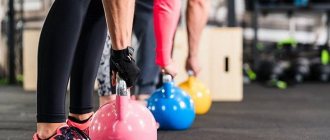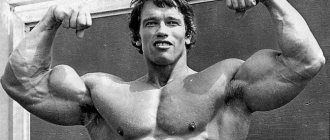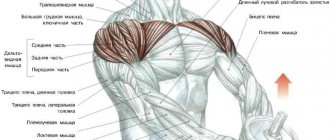Should I lift weights if I don't want to look too big? What are the benefits?
In addition to building muscle mass, weight training has the following benefits:
- Toning the body while losing weight.
- Improved athletic performance by increasing muscle size, strength, power and endurance.
- Prevention of diseases such as diabetes, osteoporosis and obesity.
- Improved balance and functionality.
- Quick recovery from illnesses.
- Assist with physical therapy during injury recovery.
- Relieve stress, increase energy and improve well-being.
What are the best exercises to get rid of fat arms, thighs and belly?
Excess fat on the stomach, forearms and inner thighs cannot be eliminated with any specific exercise. There are no exercises that target fat cells and reduce pinpoint contraction in just one area of the body. Over time, you will lose fat in all of these areas through a regular strength training, cardio and diet program that overall tightens and tones your body. Once you've lost weight, you can focus on building muscle in problem areas by following a strength training program designed for that purpose.
Power training
Strength training involves physical exercises performed with additional weights and aimed primarily at developing muscles. Specially designed strength exercises strengthen the existing muscle potential, form a beautiful and slender figure by burning bulky fat cells, and help maintain the body in such excellent condition.
Strength training is an exclusively male activity. Despite the fact that exercise with heavy weights is considered a man's activity, it is women who need it more. After all, the female body, in general, contains about 25% fat and only 15% in the male body. The male hormone testosterone is responsible for the rapid growth of biceps and triceps. Due to its low levels and high levels of the hormone estrogen, muscle mass in women forms much more slowly than in the stronger sex. Often girls are afraid that heavily pumped muscles will not look very feminine. There is nothing to fear here: unless you take special medications and biological supplements, a woman is unlikely to become like a bodybuilder.
Men and women need different training programs. In fact, men and women have the same muscles, but due to higher hormonal levels, men have larger muscles.
Women who lift weights gain large, massive muscles. Women simply do not have enough testosterone levels to increase muscle mass so dramatically. Most women will only restore the muscles that they have lost due to lifestyle, poor nutrition, impaired metabolism, etc. The maximum result is 2-3 kg of muscle mass.
Exercising on exercise machines can increase the size of the mammary gland. Unfortunately, it is not. Quite the contrary, intensive exercise, especially those that solve the problem of getting rid of fat deposits, will reduce the size of the mammary gland for the simple reason that the female breast is glandular tissue plus adipose tissue. Weight training is not able to increase the size of adipose tissue, and therefore the breasts too. However, weight training can change the shape of the pectoral muscles, over which the mammary glands lie, giving them a completely different shape. Well-designed workouts lift the chest, form a straightened posture, visually improve the shape of the mammary glands, and this is exactly what you should strive for.
If you fast and exercise in the gym, you can lose two to three sizes in a week. Most likely, you will faint from nervous and physical exhaustion. Strength training and a strict diet are incompatible. Be sure to eat a balanced diet to get enough essential nutrients. You can't do any sports on an empty stomach. An hour and a half before the start of your workout, eat some protein product with vegetables. At least drink a ready-made protein shake. If you want to lose weight, after training, eat fruits and vegetables; if you want to build muscle, then eat meat and dairy products.
Strength training is contraindicated for pregnant women and those with varicose veins. There are a lot of different strength loads. During pregnancy or any illness, you can only perform certain exercises. For example, if you suffer from varicose veins, barbell squats are contraindicated for you. And during pregnancy, you need to exclude all exercises with dumbbells and barbells. But you can exercise as much as you like on strength training machines with backrests. The main thing is that the spine and lower back are supported by some kind of support. But at 6-7 months of pregnancy, it is better to stop exercising in the gym. In any case, before starting training in the gym, always consult with both your trainer and your doctor.
Strength training consists only of lifting barbells and dumbbells. The types of strength training are very diverse. These include various exercises with dumbbells, barbells and a bodybar - that is, with free weight, and exercises on exercise machines, and even push-ups and squats, familiar from school physical education lessons. Thus, almost all exercises that are aimed at developing and strengthening the muscles of the body can be classified as strength training.
To lose excess weight you just need to stick to a diet. Diets are usually based on limiting the number of calories consumed. This will reduce muscle mass and metabolism. Exercise better and you'll lose weight more painlessly.
You can also do weight training at home. Of course you can. But to do this you need to learn how to do the exercises correctly. So first, find a good trainer who will show you how to handle dumbbells and a barbell (and, if you have one, a machine) and help you create an individual training plan and calculate the load.
The more often you train, the faster the results are visible. Unfortunately, here quantity does not always translate into quality. Too frequent and intense loads will only cause injuries and sprains. To rest, complete muscle recovery after a good strength training requires two days. So, going to the gym every day is not necessary. And a professional trainer will help you achieve better results in a short time.
In one workout you need to work all the muscles. Not true. To achieve better results during one session, professional trainers always advise focusing on one muscle group. For example, if you work out several times a week, then in the first workout, pump up your chest and arms, in the second, pay attention to your back and abs, and in the third, work on your legs and buttocks.
To lose excess weight, it is enough to do only aerobics. The statement is partly true. In the beginning, of course, aerobic exercise will be enough. And then, as you lose weight, the skin will begin to hang helplessly in folds. After losing weight, you need to gain muscle mass. Probably everyone who is losing weight knows the disappointment when, despite a strict diet and aerobics, weight loss suddenly stops, and it’s time to start going to the gym. And your metabolism will immediately speed up, and excess weight will begin to decline again. Muscle tissue requires much more calories than fat tissue. So those who want to lose weight cannot do without strength training.
Specific exercises can remove fat from specific areas of the body. It is impossible to make fat disappear only from certain areas of the body, it depends on genetics and body composition.
After strength training, muscles always hurt. Any pain should disappear about a month after starting training. If they do not stop, it means that some exercises are not suitable for you. Consult a trainer and change the load.
The effect of weight training will appear only after half an hour of continuous training. Exercising continuously for hours in the gym is strictly prohibited! Muscles can only withstand “their” load, and no more. When you get tired, your muscles begin to work half-heartedly. And there will be no benefit from further training.
After strength training, it is necessary to immediately begin aerobic exercise. You shouldn't do this. After serious work in the gym, you shouldn’t immediately run to aerobics. The muscles, and the whole body, need to rest for at least 24 hours. And then calmly go to aerobics classes.
After working out in the gym, the fatigue is so strong that you don’t even want to think about sex. To the delight of the stronger sex, this is not at all the case. During training, the body actively produces the hormone testosterone, which is actually responsible for sexual desire. So training not only does not interfere, but, on the contrary, improves your sex life.
Muscle will turn into fat if you stop exercising. Muscle does not turn into fat. If you stop exercising, you will naturally lose some muscle mass. If your nutrition stays the same, you are likely to gain more fat cells. Calling this a “transformation” would be a stretch!
How quickly can I see results?
This period occurs at different times for each person, but we can say with certainty that you will feel the results of your training before you see them. You may notice improved sleep, mood, and energy levels within two to three weeks. However, changes in body composition can be replaced later. The more consistent you are with your training and nutrition regimen, the sooner your results will become more noticeable. As they say, it takes four weeks to see your body change, eight weeks for your loved ones to notice the change, and twelve weeks for the rest of the world to notice it. Just move towards your goal.
Cardio or strength training, which should you do first?
Doing both cardio and strength training in one workout can lead to faster weight loss, regardless of which you do first. Think about where you want to direct your energy first. If your goal is to increase muscle mass, focus on weight training first. This way, you'll have the energy to lift weights and then finish burning through your glycogen stores with cardio. If you're not interested in building strength and muscle mass, hit the treadmill first and get that endorphin rush before you start lifting weights.
What is cardio training?
Recently, information about cardio exercises has become overgrown with a large number of myths. Some “experts” claim that you need to exercise in the morning, others in the evening, others claim that you need to run for 20 minutes, some insist on a two-hour run. Bodybuilding enthusiasts are generally confident that cardio training is not necessary because you are losing muscle mass; adherents of the opposite point of view suggest limiting cardio training to 5-10 minutes a day, focusing on its intensity. It’s very easy to get confused in conflicting information, so let’s try to figure out what’s true and what’s a myth.
So, cardio training (the same as aerobic exercise) is, first of all, training for the cardiovascular system, necessary for everyone who cares about their health. Aerobics is especially relevant for those who are just starting to play sports. With the help of cardio training, we prepare our body for more serious stress, strengthening the cardiovascular and respiratory systems. In the process of losing weight, cardio training also plays an important role, but more on that later.
